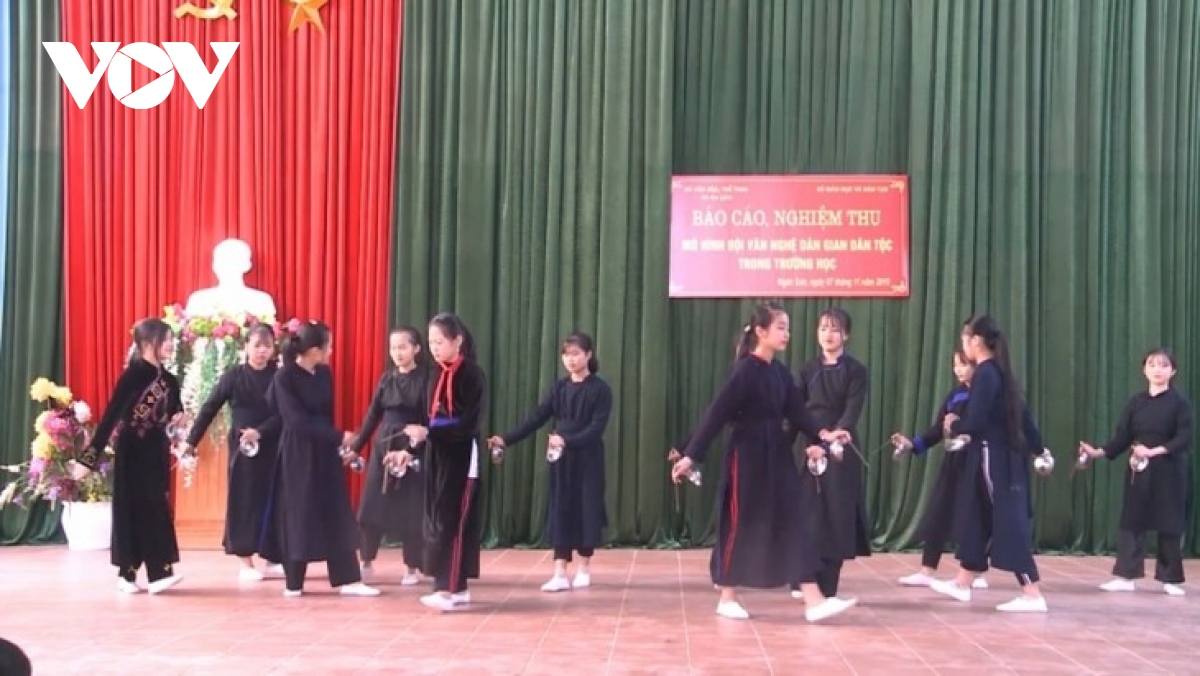Dong Xa commune in Na Ri district is said to be the place where Tay ethnic people first inhabited. For hundreds of years, the Tay have managed to maintain their cultural values through their costumes, houses, and art.
No one knows for sure when the bowl folk dance first appeared, but it has been preserved for many generations. According to legend, bowl dance describes the weaving activities of the Tay people in the past. The instrument used for performing this dance includes a bowl and chopsticks which are used in daily meals.
The bowl is used for silk incubation while the chopsticks are used for stirring the compressed silk in the bowl. People must stir evenly to let the silk threads roll into the chopsticks. This movement is repeated many times until there is enough silk to weave the fabric.
Another legend says the bowl folk dance originated from the Tay festival of praying for crops and new rice festival, thus bowls and chopsticks are used for the dance.
“Bowl folk dance has been handed down by the Tay people for hundreds of years. We are now teaching young people the bowl folk dance to preserve and promote it,” says Nong Thi Oanh, head of Dong Xa commune’s Culture and Sports Club for the Elderly.
To perform this type of dance, you must know how to keep exact rhythm and combine the movement of the arms and feet. The performers dance to the steady rhythm of bowls and chopsticks, showing their wish for a bumper crop.
Bowl folk dance can be performed in a flash mob form during a village festival, the Lunar New Year, or market day. When visiting Tay ethnic villages by Ba Be lake, visitors can immerse themselves in the primitive beauty of the mountains and forests as well as the folk music handed down for generations.

Nong Thu Bien, head of the art troupe of Coc Toc hamlet, Be Be district, notes bowl folk dance has been modified to serve tourism purposes.
“Our art troupe performs bowl dance every Thursday, with the dance highly appreciated by both domestic and foreign tourists,” says Bien.
To implement a project combining the promotion of traditional cultural values and tourism development in Ba Be, Bac Kan province’s Department of Culture, Sports and Tourism has set up folk art troupes to provide training for songs and dances, including bowl folk dance. Folk art troupes are also set up in local boarding schools.
“Through bowl folk dance, I better understand the life of our predecessors in the past. I will continue to practice the dance and hope to popularize it in other areas,” says Nong Thi Viet Hoa, a pupil in Cho Chua hamlet, Na Ri district.
The bowl folk dance of the Tay has been recognized as a national intangible cultural heritage.
Discovering Tham Phay mysterious cave in Bac Kan
Located in the vast forest of Ba Be District, Bac Kan Province, Tham Phay Cave in Na Slai Village, Hoang Tri Commune beckons adventurous travellers to conquer its pristine and mysterious beauty.








